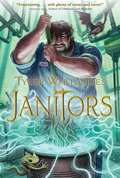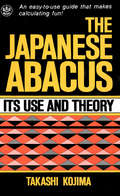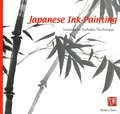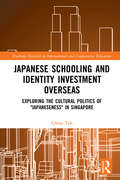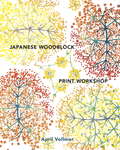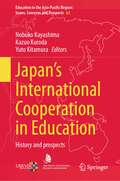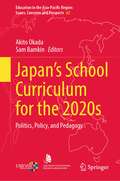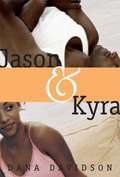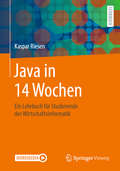- Table View
- List View
Janice VanCleave's Physics for Every Kid: Easy Activities That Make Learning Science Fun (Science for Every Kid Series #69)
by Janice VanCleaveIgnite a passion for science in your student or child with these fascinating physics experiments for kids!Janice VanCleave's Physics for Every Kid: Easy Activities That Make Learning Science Fun, 2nd Edition offers new and lively experiments designed to ignite a passion for science in every child. Designed for children of all ages, this book includes high-interest experiments suitable for home learning, science fair participation, and active classrooms.Physics for Every Kid is sure to engage the natural curiousity of children with experiments that stimulate the mind and encourage a foundation in the principles of physics. With common household items, you'll be able to create: Pendulums Air cars Experiments exploring magnets, sound, motion, light, and more This update to the celebrated Janice VanCleave series includes a fresh new look with full-color illustrations and easy-to-understand explanations for each experiment.Perfect for educators and parents of middle school students, Physics for Every Kid can be used at home just for do-it-yourself science fun and in the classroom to build learning experiences that enlighten and entertain students.
Janitors
by Tyler Whitesides Illus. by Brandon DormanA sixth grader stumbles upon a secret that threatens to turn schoolchildren everywhere into mindless automatons. This horror story is full of gore (but very little blood) and includes many fantasy elements and creatures. Includes a Reader's Guide of questions at the end.
Janjak and Freda Go to the Iron Market
by Erin Vaganos Elizabeth TurnbullIn this first book of the bilingual Janjak and Freda series, cousins Janjak and Freda go with their godmother on an exciting adventure to Haiti's famous Iron Market. While there, they make many new friends, taste new fruits, and show the value of helping others when a runaway goat causes havoc in the market. The colorful text and beautiful illustrations will leave children dreaming up their own adventures. This story is told in such a way that the characters, scenery, and plot will be meaningful to both English speaking children and Creole speaking children. Rather than a literal translation, the Creole text has been rewritten by Wally Turnbull to provide the most authentic experience for Creole speakers.
Janusz Korczak: Educating for Justice (SpringerBriefs in Education)
by Joop W. BerdingThis book presents the educational view and practice of the Polish-Jewish doctor, writer and pedagogue Janusz Korczak (Warsaw 1878–Treblinka 1942). In the authors' reconstruction five core elements stand out: respect for every child; participation; justice; dialogue as expression and communication; self-awareness and reflection on the part of the educator.These elements do not constitute a well-rounded theory or philosophy, but are part of many stories of living together with children, in Korczak’s case orphans. Korczak, actively involving the children themselves, organized this life in such a way that justice ruled. He is the pedagogue of narrativity and of democratic upbringing. Korczak explored many, and today still challenging ways of participative education.The book shows that besides the now domineering positivist outlook on education, with its technocratic language and stress on output, standards, testing, etc., another language is possible, one that is more practice-based and that teachers will relate to immediately: love for children, a pedagogical ethos, and seeking ways to live together in a just way.
Japan and the Pursuit of a New American Identity: Work and Education in a Multicultural Age (Routledge Revivals)
by Walter FeinbergFirst published in 1993, Japan and the Pursuit of a New American Identity is a sophisticated analysis of the mission of education in a multicultural age. Arguing that American education has been too long constrained by conservative discourse – which positions schools and students as weapons in an international competition with the Japanese – author Walter Feinberg assesses the cultural and philosophical limits of conservative vision as popularized by exponents Allan Bloom and E. D. Hirsch. Feinberg then develops a vision of education which accommodates the growing cultural diversity of American society and American schools. At the heart of Feinberg’s study is a unique philosophical analysis of Japanese and American attitudes towards work and education. Through a series of sensitively developed interview with American and Japanese workers, managers, parents, and teachers who have experienced life in one another’s culture, he examines the implications of our profound cultural differences with the Japanese for the development of a new American, multicultural identity. This book will be of interest to students of education, pedagogy, history and public policy.
Japanese Abacus Use & Theory
by Takashi KojimaThe Japanese Abacus & Theory book is easy to follow, and gives the reader step-by-step directions on how to use it correctly while applying it to practical use. The imperfect numerical notation and scarcity of suitable writing materials in ancient times are presumed to have given rise to need for devices of mechanical calculation. While the definite origin of the abacus is obscure, there is some reason for believing that its earliest form reckoning table covered with sand or fine dust, in which figures were drawn with a stylus, to be erased with the figure when necessary. Though the Abacus is an older tool for calculation it still is used today in Japan taking on a different name called Soroban. Though the Japanese Abacus or Soroban may appear mysterious or even primitive to those raised in the age of pocket calculators and desktop computers, this intriguing tool is capable of amazing speed and accuracy. It is still widely used throughout the shops and markets of Asia, and its popularity shows no sign of decline. Here for the first time in English is a complete explanation of how to use the abacus.
Japanese Americans and Cultural Continuity: Maintaining Language through Heritage (Studies in the History of Education #5)
by Toyotomi MorimotoFirst Published in 1997. Routledge is an imprint of Taylor & Francis, an informa company.
Japanese Education in a Global Age: Sociological Reflections and Future Directions (Education in the Asia-Pacific Region: Issues, Concerns and Prospects #46)
by Akiyoshi Yonezawa Yuto Kitamura Tomoko Tokunaga Beverley YamamotoThis book highlights recent education research on Japan based on sociological and other related approaches to historical developments and accomplishments. Written primarily by members of the Japan Society of Educational Sociology, it brings to light concerns and viewpoints that have grown out of the Japanese educational context. By focusing on uniquely Japanese educational research phenomena, the book offers international readers new insights and contributes to the international debate on education. It may help sociologists and social scientists outside Japan gain a deeper understanding of ongoing changes in education in Japan as well as its historical and structural contexts.
Japanese Ink Painting
by Ryukyu SaitoHere is a book to teach the beginner the fundamental techniques of suiboku, the unique form of Oriental art that has produced some of the world's finest masterpieces of ink-painting. Originating in China and having its spiritual basis in Zen Buddhism, this form of expressing nature's colors through shades of black ink monochrome has been enjoyed throughout the centuries in the Orient as a hobby for the amateur.
Japanese Ink Painting
by Ryukyu SaitoHere is a book to teach the beginner the fundamental techniques of suiboku, the unique form of Oriental art that has produced some of the world's finest masterpieces of ink-painting. Originating in China and having its spiritual basis in Zen Buddhism, this form of expressing nature's colors through shades of black ink monochrome has been enjoyed throughout the centuries in the Orient as a hobby for the amateur.
Japanese Ink Painting
by Ryukyu SaitoHere is a book to teach the beginner the fundamental techniques of suiboku, the unique form of Oriental art that has produced some of the world's finest masterpieces of ink-painting. Originating in China and having its spiritual basis in Zen Buddhism, this form of expressing nature's colors through shades of black ink monochrome has been enjoyed throughout the centuries in the Orient as a hobby for the amateur.
Japanese Kanji Flash Cards Volume 2: Intermediate Level (Downloadable Material Included)
by Emiko Konomi Alexander KaskEverything you need to learn 200 everyday Japanese kanji characters is here in this ebook!Flash cards are an essential tool in memorizing words when you are learning a new language. In Japanese Kanji Flash Cards Kit, Volume 2, you'll get all the tools needed to learn 200 everyday Japanese kanji, following on from the 200 kanji introduced in Volume 1 of this series.This Japanese language ebook includes: 200 flash cards featuring commonly used characters. Downloadable audio recordings of over 1,200 words and phrases from a native speaker. A 32-page study booklet with sorting indexes and practice tips. Each expertly designed flash card in this ebook offers core information about the meanings, pronunciations, vocabulary, and usage for each character along with memorable phrases and drawings to help you learn the kanji. A stroke-order diagram shows how to write the kanji correctly. You can also sort the cards into smaller sets so you can learn or review them in batches and help to remember the kanji character effectively.
Japanese Model of Schooling: Comparisons with the U.S. (Reference Books in International Education #27)
by Ryoko TsuneyoshiFirst published in 2001. Routledge is an imprint of Taylor & Francis, an informa company.
Japanese Schooling and Identity Investment Overseas: Exploring the Cultural Politics of "Japaneseness" in Singapore (Routledge Research in International and Comparative Education)
by Glenn TohThis book is about education, ideology, power and identity investment and concerns an influential East Asian expatriate community. Specifically, it seeks to understand particular ways in which the Japanese white-collar elite live as a closed and self-referentially defined in-group, despite the manifestly multicultural ethos of their Singaporean domicile. The study attends to issues regarding schooling, unity, diversity and community based on grounded anthropological observations. Specific observations centre around the particularities of Japanese nation-state schooling practices set in cosmopolitan Singapore, a contrastingly non-Japanese setting. The insights therein are made possible by way of seeing education as an ideological domain and powerful discursive platform. Using this framework, cultural and identity-related practices are viewed dynamically and appreciated for their fluidic reflection of identity praxes. Readers will gain fresh insights into the role of education and ideology in reproducing asymmetry and the value of sociohistorical analyses in surfacing hidden power relations. Researchers, educators and decision makers will appreciate the transparency of grounded ethnographic observation yielding insights into practices which imbricate inclusion-exclusion and privilege-marginalization debates within a neoliberal hegemony. Students of the social politics of education and the cultural politics of language, ideology and identity will find the book a provocative read.
Japanese Studies in Britain: A Survey and History
by Hugh Cortazzi Peter KornickiThis book takes an in-depth look at the study of Japan in contemporary Britain, highlighting the many strengths but also pointing out some weaknesses, while at the same time offering a valuable historical record of the origins and development of Japanese Studies in British universities and other institutions. It comprises essays written by scholars from universities all over Britain – from Edinburgh and Newcastle to Cardiff, SOAS and Oxbridge+, as well as contributions from various supporting foundations and organizations – from the British Association of Japanese Studies (BAJS) to the Sainsbury Institute for the Study of Japanese Arts and Cultures (SISJAC). It opens with an historical overview by Peter Kornicki, followed by chapters on the important role of missionaries in advancing Japanese language studies in pre-war Japan by Hamish Ion and the contribution of the British consular and military officers before 1941 by Jim Hoare. Japanese Studies in Britain gives a snapshot of the present state of Japanese Studies in Britain. It also provides an important new benchmark and point of reference regarding the present options for studying Japan at British universities. It offers in addition a wider perspective on the role, relevance and future direction of Japanese Studies for academia, business and government, students planning their future careers and more generally the world of education, as well as readers interested in the developing relationship between Britain and Japan.
Japanese Woodblock Print Workshop
by April VollmerAn inspirational how-to course on Japanese woodblock printing's history and techniques, with guidance on materials and studio practices, step-by-step demonstrations, and examples of finished works by modern masters of the medium as well as historic pieces. A Modern Guide to the Ancient Art of mokuhanga An increasingly popular yet age-old art form, Japanese woodblock printing (mokuhanga) is embraced for its non-toxic character, use of handmade materials, and easy integration with other printmaking techniques. In this comprehensive guide, artist and printmaker April Vollmer--one of the best known mokuhanga practitioners and instructors in the West--combines her deep knowledge of this historic printmaking practice with expert step-by-step instruction, guidance on materials and studio practices, and a diverse collection of prints by leading contemporary artists. At once practical and inspirational, this handbook is as useful to serious printmakers and artists as it is to creative people drawn to Japanese history and aesthetics.From the Hardcover edition.
Japanese Woodblock Prints
by Stephen Addiss Andreas MarksJapanese woodblock prints, or ukiyo-e, are the most recognizable Japanese art form. Their massive popularity has spread from Japan to be embraced by a worldwide audience. Covering the period from the beginning of the Japanese woodblock print in the 1680s until the year 1900, Japanese Woodblock Prints provides a detailed survey of all the major artists, along with the images on which their fame rests.Unlike previous examinations of this art form, Japanese Woodblock Prints includes detailed histories of the publishers of woodblock prints--who were often the driving force determining which prints, and therefore which artists, would make it into mass circulation for a chance at critical and popular success. Invaluable as a guide for ukiyo-e enthusiasts looking for detailed information about their favorite artists and prints, it is also an ideal introduction for newcomers to the world of the woodblock print. This lavishly illustrated book will be a valued addition to the libraries of scholars, as well as the general art enthusiast.
Japan’s International Cooperation in Education: History and Prospects (Education in the Asia-Pacific Region: Issues, Concerns and Prospects #63)
by Yuto Kitamura Kazuo Kuroda Nobuko KayashimaThis book records the history of Japan’s international cooperation in education from the 1950s to 2020. It provides a crucial overview of the nearly 70 years since Japan began engaging in international cooperation in education in order to record and document these efforts that range from basic to higher education to technical and vocational education and training, and the large numbers of people involved in their respective areas of activity and specialization. The book provides useful indicators for exploring new forms of education cooperation in this age of global governance and beyond. The authors include not only researchers but also field practitioners, such as personnel from the Japan International Cooperation Agency and NGOs.
Japan’s School Curriculum for the 2020s: Politics, Policy, and Pedagogy (Education in the Asia-Pacific Region: Issues, Concerns and Prospects #67)
by Akito Okada Sam BamkinJapan’s school curriculum, revised for the 2020s, introduces new subjects and, perhaps more importantly, a new vision for teaching referred to as 'active learning'. This book examines the social and political realities that provided space for this unprecedented curriculum reform; the policymaking process through which it was refined; its envisaged pedagogy, and the intended and unintended outcomes of the new requirements, both on the ground in each school subject and across the education system. Finally, the book steps back to consider the possible future of ‘active learning’ and direction of the course of study in this decade and the next. This book will be of interest to those researching contemporary Japanese education, education policy, curriculum studies and equality of educational opportunity.
Jasmine’s Snowy Day
by DISNEY BOOK GROUPIt is very hot in the city of Agrabah...and has been hot for ten straight days! Jasmine really needs a break from the heat and wants to go somewhere cool. So with the Genie's help, Aladdin decides to make her wish come true by bringing snow to Agrabah! Join Aladdin and the gang as they cool off and enjoy their first snow day together!
Jason and Kyra
by Dana DavidsonJason and Kyra are paired up for a class project. Jason tells things to Kyra that he can't even tell his best friend and finally he falls in love. No one in school can believe it especially Jason's ex-girlfriend who is determined to get him back.
Jasper the Badger: Targeting the j Sound (Speech Bubbles 2)
by Melissa PalmerJasper the badger has a plan to get some peace and quiet so he can eat his piece of fudge by himself. But will his plan work? This picture book targets the /j/ sound and is part of Speech Bubbles 2, a series of picture books that target specific speech sounds within the story. The series can be used for children receiving speech therapy, for children who have a speech sound delay/disorder, or simply as an activity for children’s speech sound development and/or phonological awareness. They are ideal for use by parents, teachers or caregivers. Bright pictures and a fun story create an engaging activity perfect for sound awareness. Picture books are sold individually, or in a pack. There are currently two packs available – Speech Bubbles 1 and Speech Bubbles 2. Please see further titles in the series for stories targeting other speech sounds.
Jathaka Sahithyaya thulin pilibimbu vana bauddha AcharaDarma - ජාතක සාහිත්යය තුළින් පිළිබිඹු වන බෞද්ධ ආචාර ධර්ම
by Mahalle Wipulathiss Thero - මාහල්ලේ විපුලතිස්ස හිමිපොදුජන ජීවිතය සමග දැඩි සබඳතාවක් පවත්වනු ලබන ජාතක කථා ක්ෂේත්රය හා සම්බන්ධ ආචාර ධර්මයන් බෞද්ධ සාහිත්යාගත සෙසු මූලික පෙළපොත් සමඟ තුලනාත්මක ව පුළුල් ලෙස විමර්ශනයකට ලක් කරමින් රචිත ඉතා ප්රයෝජනවත් කෘතියකි.
Jathyanuragaya - ජාත්යනුරාගය
by K.N.O. Dharmadhasa - කේ. එන්. ඕ. ධර්මදාසජාතිකවාදය නම් සුවිසල් විෂයය අරභයා මූලික හැඳින්වීමක් සහිත ඉතා වටිනා ග්රන්ථයකි.
Java in 14 Wochen: Ein Lehrbuch für Studierende der Wirtschaftsinformatik
by Kaspar RiesenDieses Buch ist der ideale Begleiter, wenn Sie in einem Semester Java lernen möchten. Der Inhalt wurde gezielt ausgewählt, so dass nur die Konzepte besprochen werden, die Sie zum Einstieg in die Programmierung wirklich benötigen. Diese Konzepte werden mit zahlreichen, anschaulichen Beispielen illustriert. Weiter wird im Buch ein durchgehendes Beispielprojekt in Java, das von Kapitel zu Kapitel wächst, entwickelt. Zu jedem Kapitel finden sich zudem viele Aufgaben zur Selbstkontrolle und Programmierübungen in Java. Zu jeder Übung ist ein Lernvideo verlinkt, auf dem der Autor des Buches die Übung vorprogrammiert. Das Buch ist somit optimal geeignet für Studierende der Wirtschaftsinformatik, Informatik oder anderer Fachrichtungen sowie für alle Interessierten, die ohne Vorkenntnisse Programmieren lernen möchten.

